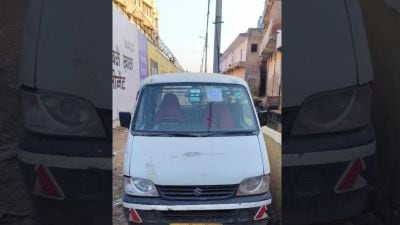Relief for Marathwada farmers as level in Jayakwadi dam to cross 45% after water release from reservoirs upstream
Shrinking levels in the Jayakwadi dam in Chhatrapati Sambhajinagar had raised an alarm last month with activists and political leaders taking to the streets in protest.
 Since November 25, water has been released from the dams upstream. (Express archive photo)
Since November 25, water has been released from the dams upstream. (Express archive photo)Farmers in Marathwada can finally heave a sigh of relief as water level in the crucial Jayakwadi dam is set to cross 45 per cent, thanks to the water released from upstream reservoirs in Nashik, Ahmednagar districts of northern Maharashtra.
Water level in the dam located in Paithan taluka of Chhatrapati Sambhajinagar was 38 per cent till recently, compared to last December when it was 2,170,920 million litres or at 100 per cent of its capacity.
Shrinking levels in the dam had raised an alarm last month with activists and political leaders across party lines coming together and taking to the streets in protest. They demanded immediate release of water from northern Maharashtra to the Marathwada region. Since November 25, water has been released from the dams upstream.
A series of public interest litigations (PILs) were filed in court after politicians in the northern regions of the state, including elected BJP representatives, opposed the release of water from their dams to Jayakwadi.
After taking stock of the situation, the state government intervened, facilitating the water release from Darna, Mulla, Pravara (Nashik) and Ahmednagar dams to Jayakwadi.
According to activist Abhijeet Dhanorkar Joshi, “Under the Equitable Water Distribution policy Marathwada is entitled to 8.6 TMC water from upstream reservoirs in north Maharashtra.” Yet, he lamented, ” Every year people of Marathwada have to take to protests for their rights. There is reluctance to release water to Marathwada which is inhumane.”
On October 30, the Godavari Marathwada Irrigation Development Corporation (GMIDC) issued an order to release 8.6 TMC water to Jayakwadi dam from upstream areas. Joshi said, “The GMIDC suo motu took the decision to reduce the water released to Jayakwadi by 0.76 TMC. They should have at least discussed this with stakeholders in the Marathwada region.”
The activist alleged that northern Maharashtra always withholds more water than the sanctioned quota. “They have the advantage because of water structures and geographical conditions. Whereas, drought-prone Marathwada is completely dependent on Jayakwadi which is the main water supply source for both domestic purposes and agriculture,” he said.
A GMIDC official said, “We strictly follow the standard operating procedures in releasing water from dams from one region to another. It is a highly technical subject. Our decisions are based on the ground situation. The street protests on both sides, Marathwada and north Maharashtra, involve politics. Both want to address the issues of their own people which is understandable.”
Former NCP minister Rajesh Tope, who is with the Sharad Pawar faction and had led the protests in the Marathwada region, said, “We were raising our voice to ensure justice for Marathwada region. The GMIDC had issued an order for water release to Jayakwadi from upstream. We wanted its implementation without further delay.”
A BJP minister, who represents north Maharashtra, said, “It is a fact that our dams have more water compared to those in Marathwada. But the point is, there are remote villages reeling under dry spells. People fear that if water from the upstream areas is released, the situation will worsen in summer.”
Leaders and activists in north Maharashtra argued that last year the water storage in the region’s 571 dams stood at 89.68 per cent. Currently, it is lower at 75.61 per cent. The water levels will decline further with long summers ahead.
However, Marathwada – with 36.80 per cent water storage in 964 dams – is already in a precarious situation. Records from last year show it was in a commanding position with the level at 90.06 per cent.








